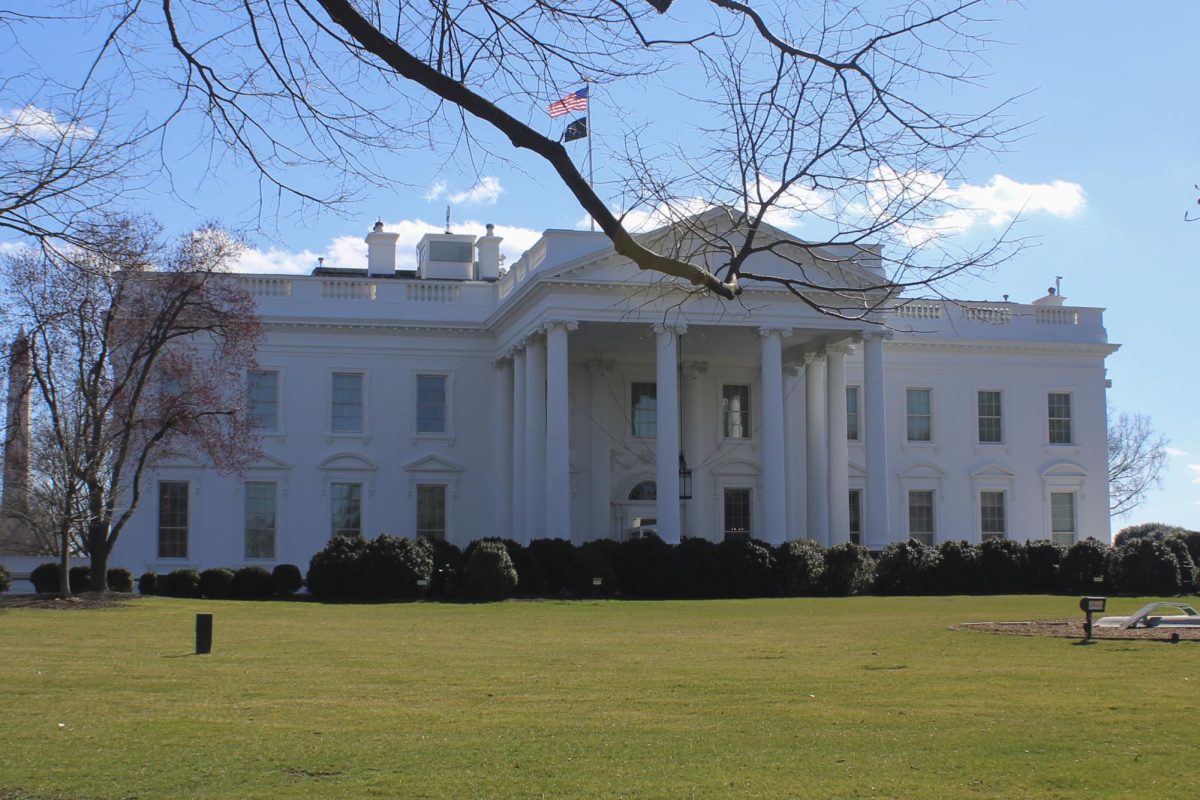Column: #EmmysSoWhite trends again
October 19, 2021
Although it marks the beginning of the annual television season, the Emmys arrives as another installment in this year’s long procession of awards programs that have failed to acknowledge non-white talent in the film and television industries.
7.4 million viewers tuned in to the 73rd Primetime Emmy Awards, which aired Sept. 19 over television and online from Los Angeles, breaking the telecast’s downward spiral after hitting an all-time low last year in ratings.
This year, the millions of eyes trained on the celebration of the year’s best in television erupted into a cacophony of critical voices online throughout the night as all major acting awards went to white actors, despite this year’s Emmy Awards boasting the most diverse roster of nominees in the ceremony’s history.
At the start of the 2021 awards season, the kickoff Golden Globes met near unanimous criticism for a ceremony filled with vague promises for diversity from the Hollywood Foreign Press Association. The Globes’ lucrative voting body nominated no Black-led movies for the year and has yet to admit any Black people into its membership. In fact, public fallout escalated to the point that NBC cancelled its TV coverage of the program for 2022.
Even with the guidance of popular, repeated criticisms of the awards season’s prior shows, the Emmys has fallen short of breaking its predecessors’ mold.
Host Cedric the Entertainer oversaw a three-hour ceremony that boasted a lineup of over a dozen actors of color who crossed the stage to DJ Reggie Watts’ renditions of Run DMC and the Notorious B.I.G. and opened the envelopes to announce winners’ names, although never winning an award themselves. Among them were Taraji P. Henson, Angela Bassett, Mindy Kaling and Ken Jeong, painting a diversified portrait of the television industry, as curated by the hand of the Emmys’ voting body, the Television Academy.
With people of color seemingly decorating the ceremony with diversity, the academy was free to step back, instead opting to vote for predictable, perennial and white favorites. This kind of institutional backpedaling forgets television’s historical roots as a progressive medium.
Throughout the 20th century, as the film industry grew increasingly corporate and thus more stringently beholden to the demands of a few major studios, writers migrated to television, which was still unfolding and defining its identity as a medium.
Forward-thinking creatives like writer and producer Norman Lear leveraged television to challenge the American media industry and the cultural values it reproduced, creating series like “All in the Family” (1971-79), which explored taboo topics ranging from civil rights to the Vietnam War from a working-class perspective, and “The Jeffersons” (1975-85), which pioneered the way for Black-led casts and the representation of Black family life in television.
This history of challenging the industry’s status quo and making room for diverse voices is ongoing throughout the contemporary television scene, despite the Emmys’’ blind eye to it. This year, critically acclaimed Black-led productions like “I May Destroy You,” “Lovecraft Country” and “Pose” went head-to-head against notably white-led academy favorites “Ted Lasso” and “The Crown.”
Despite the deciding influence of the Television Academy’s inflexibility, the Emmys did embrace one agent of change: streaming. The overwhelming majority of the night’s nominees came from streaming platforms, a space that the television industry has long grappled with.
While the dominant television networks that favored similarly “traditional” representation, storytelling and employment initially struggled to compete with the streaming model, marginalized filmmakers saw an outlet with lower barriers to entry, diversified audience reach and little to no creative barricades.
A decade ago, the six 2011 Outstanding Drama Series nominees were all white-led network productions. This year, three out of the eight nominees in the same category were POC-led, and five out of the eight featured actors of color in major roles.
Aside from the presence of people of color in the ceremony’s most prestigious categories, the 2021 Emmys also boasted a developed, highly competitive limited series category, a genre that rose to prominence alongside the rise of streaming. This year, three out of the five nominees for best limited series were Black-led productions, a dramatic maturation from the last-minute amalgamation of qualifying “miniseries or movies” in the 2011 Emmys.
Diversity in television is no longer a newly emerging force, and even institutions as consciously sightless as the Television Academy have no choice but to recognize the decades of people of color’s work in this year’s history-making nominations of diverse productions, actors and writers. Of course, when given the final say, the Academy elected the safe, predominantly white creators and projects that reaffirmed the antiquated and unchanging portrait of the television industry to which it belongs.
Viewers panned the Emmy Awards ceremony for proving itself to be dynamic and able to adapt to a changed world as it embraced the industry shift to streaming, yet failing to carry that spirit of progress where it counts: into the academy’s votes. Now the Television Academy and its peers who have likewise waged an internal, institutional war against recognizing diverse talent in the arts must come to terms with the reality of their ever-changing cultural world.
People of color are not leaving storytelling at the stifling hand of any Academy, and these archaic gatekeepers of acclaim must decide for themselves whether to catch up or clock out.







